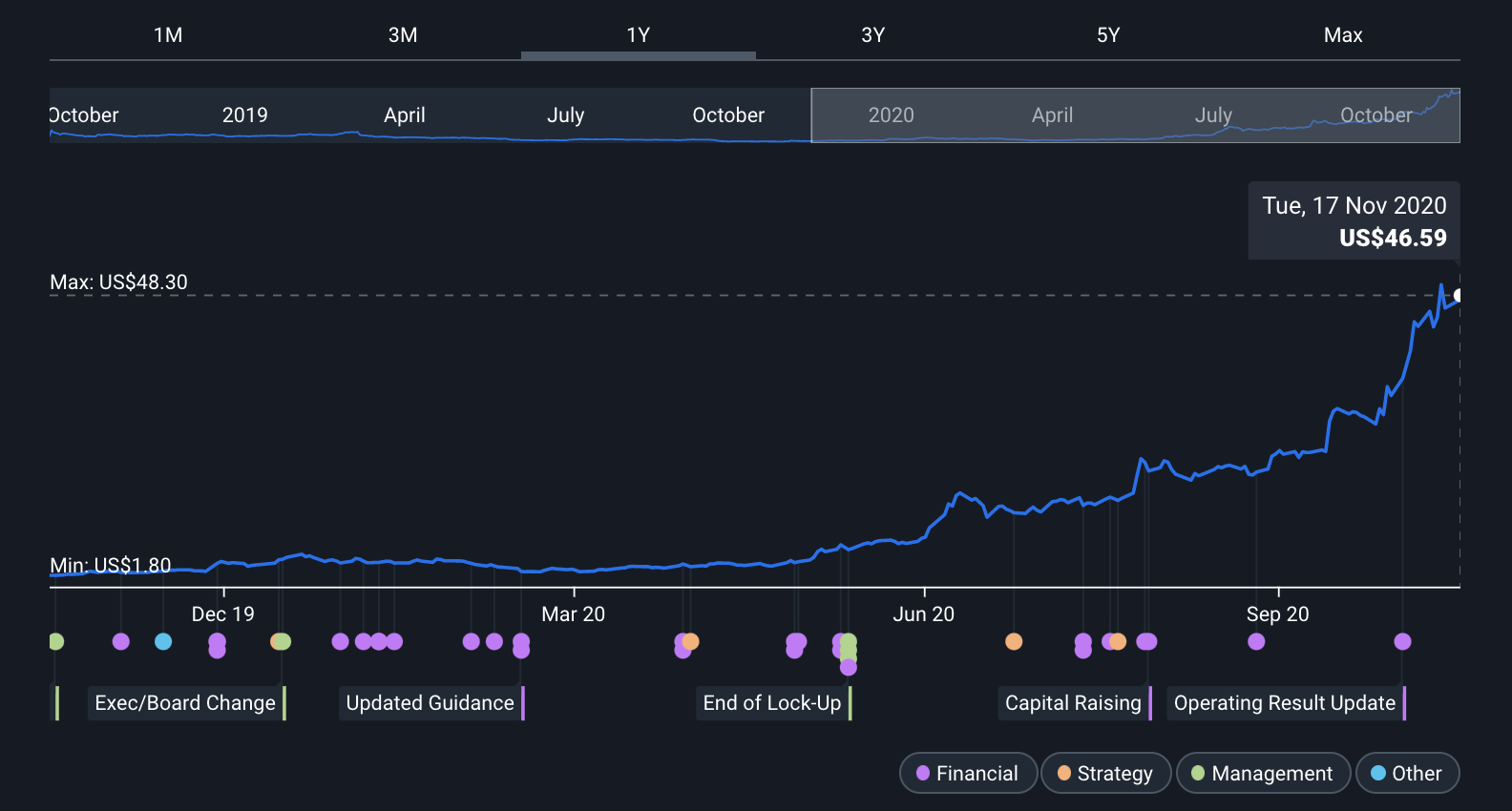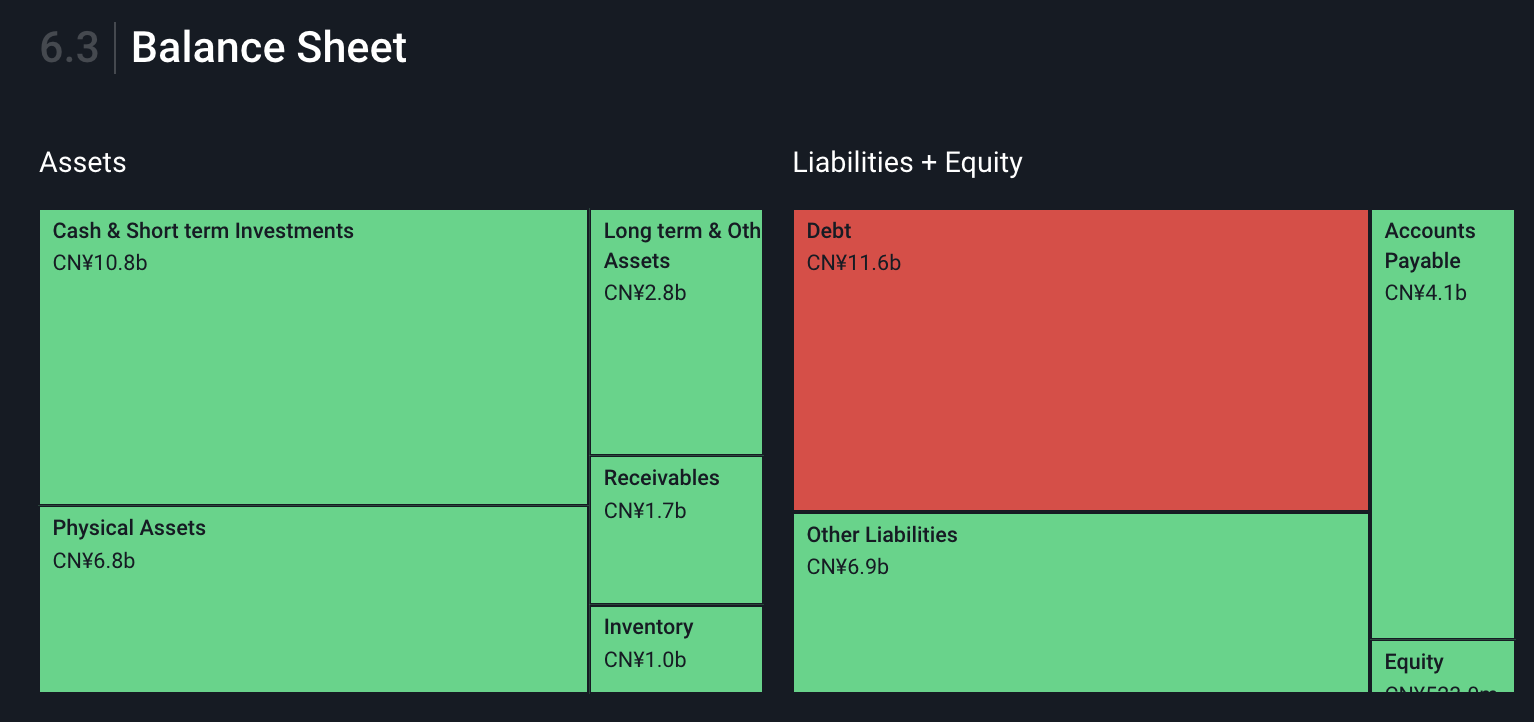By Kshitija Bhandaru
The Auto industry plays a critical role in some of the world’s largest economies, including China, which has been the world’s largest auto manufacturer since 2009. More recently, many countries including China have been moving to cut down their carbon emissions and in fact, the country recently announced its plans to achieve carbon neutrality by 2060. As part of this process, the Chinese government has been encouraging the adoption of electric vehicles (EV).
According to the International Energy Agency (IEA), over the last 10 years, EV sales have risen from 17,000 to 7.2 million, 47% of which were in China.
An emerging player that has been posing as a viable competitor to US’s Tesla ( NASDAQ: TSLA), a dominant player in the electric vehicles space, is Nio Limited ( NYSE: NIO ). The company sold 5,055 vehicles in October 2020, the highest on record for any month in the company’s history. Nio’s stock was up almost 6% after the announcement.
 NYSE: NIO Stock price, November 18, 2020 (Source: Simply Wall St)
NYSE: NIO Stock price, November 18, 2020 (Source: Simply Wall St)
This brings its total sales so far in 2020 to 31,430 vehicles and total since operation to 63,343, meaning 2020 was a landmark year in terms of doubling its total sales to date. While that number is still a long way off from Tesla’s 320,000 vehicles delivered in 2020, it’s still a huge positive for the company considering that it was almost at the brink of bankruptcy in 2019.
Check out our latest analysis for Nio Limited
Chinese government support for electric vehicles
A big reason for Nio being competitive in the EV space is because of the support it receives from the government. Last year, the government supported Nio by offering it a RMB7 billion (US$1b) bailout last year, providing the company some much needed financial support (the company’s cash was down to RMB863m at the end of 2019 from RMB3.1b in the preceding year).
 NYSE: NIO Balance Sheet, November 18, 2020 (Source: Simply Wall St)
NYSE: NIO Balance Sheet, November 18, 2020 (Source: Simply Wall St)
Government subsidies have encouraged EV-startups such as Nio to enter the market with ease. The company’s alliance with Anhui Jianghuai Automobile Group Corp, or JAC, a state-owned automobile manufacturer, has proved pivotal to its success, allowing it to enter the market without having traditional manufacturing experience. Under the arrangement with JAC, Nio supplies the raw materials which are then used to produce vehicles in a JAC-owned factory in Hefei. In exchange, Nio pays JAC on a per-vehicle basis.
Generally speaking, the Chinese government has been willing to pull several policy levers to support the EV industry. These include incentives such as purchase rebates and tax exemptions. For instance, the government had restrictions around securing a license plate to limit the number of new vehicles on the road to reduce pollution. However, several local governments have been lifting these restrictions on the purchase of new EVs.
Despite these incentives, the pandemic brought about by COVID-19 had significantly impacted EV sales for several automakers in China.
Sales had already started to sputter last year as the government gradually started cutting back its support with a view to phasing out subsidies by 2020. Nio saw its Q1 2019 and Q2 2019 EV sales drop by approximately 58% and 8% sequentially as a result of the subsidy cuts.
According to a McKinsey report, 100,000 units of EVs were sold in China in June 2020 compared to 196,000 sold in June 2019. In response to the pandemic, Beijing decided to extend the subsidies to 2022.
The government is working towards the goal of increasing the market share of EVs to 25% by 2025 from the current 5%. By the looks of it, it seems like every attempt to reach that goal, including adopting pro-EV policies, will be made on Beijing’s part for as long as it needs to. This would make companies like Nio direct beneficiaries of the industry’s promising prospects.
Risk-return tradeoff
Nio’s success is anchored to support from the government to a great extent. While it did receive financial support in the form of a $1b bailout last year, it came at a cost. The $1b was provided by a consortium of state-owned organisations . In return, Nio needed to establish a separate company- Nio China and transfer its core assets in China, valued at around RMB18b to the new entity. Assets included R&D, supply chain and manufacturing, and Nio Power network (battery charging and power swap facility network). The investor group would own around 24% of Nio China, along with voting rights, and the rest would belong to Nio Inc.
Additionally, Nio has committed to building a new headquarters for Nio China in Hefei.
By its own admission, Nio motors acknowledged that granting voting rights to the investor group would limit its ability to make certain major corporate decisions with regard to the new subsidiary. Moreover, if Nio doesn’t meet certain corporate agreements including failure to take Nio China’s subsidiary public within five years, the Hefei investors can redeem their shares at an 8.5% premium. If that happens and Nio doesn’t have adequate cash, the company may be forced to sell its own stake in Nio China, and consequently lose control of its operations in China. This implies that even with a minority stake in the new entity, by virtue of their equity injection, the Hefei investors have a senior claim to the company’s capital structure. If for any other reason the business goes sideways, the investors would receive a hefty payout. On the flip side, if Nio manages to meet all the agreements, the group of investors stands to benefit from its 24% equity in the company.
While it's true that state support is key to Nio’s success, it has come at a huge cost to the company. Nio’s risk of insolvency has been replaced by other operational and financial risks. Meanwhile, the government receives a guaranteed return on its investment.
Is government backing enough?
The company has burned around RMB7b of cash since 2016, mostly due to aggressive spending on its retail strategy, and is far from profitability. In addition to the per-vehicle costs it pays to JAC as part of the arrangement, the company is also required to cover operating losses for JAC until 2021.
While several factors have contributed to the obstruction in the company’s progress, including a car battery recall, reduction of government subsidies, and a pandemic that caused China’s economy to slow down, the company would need more than just a helping hand from Beijing to come up with a more cost-effective strategy to scale up production while maintaining quality.
It’s also important to be mindful that government support comes out of vested interests and is conditional. As we saw above, the $1b bailout to Nio came at a significant cost to the company involving changes to its corporate structure and forced commitments on Nio’s part. Investors viewing Nio would also need to consider the risks associated with the Chinese government’s involvement in the company and decide if the risks outweigh the benefits. Risks include failure to comply with the agreements made with the state-owned investors, not to mention the risk of subsidies drying up in the future.
Stepping away from the macroeconomic risks associated with NIO, we have also identified 2 more risks related to business performance that investors need to consider before investing.
Neither Simply Wall St analyst Kshitija Bhandaru nor Simply Wall st hold any position in any of the companies mentioned. This article is general in nature. It does not constitute a recommendation to buy or sell any stock and does not take account of your objectives, or your financial situation. We aim to bring you long-term focused analysis driven by fundamental data. Note that our analysis may not factor in the latest price-sensitive company announcements or qualitative material.
The views and opinions expressed herein are the views and opinions of the author and do not necessarily reflect those of Nasdaq, Inc.


